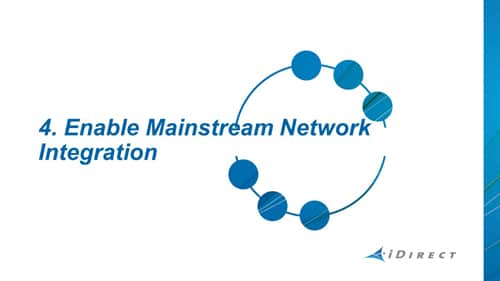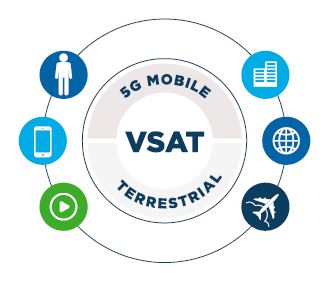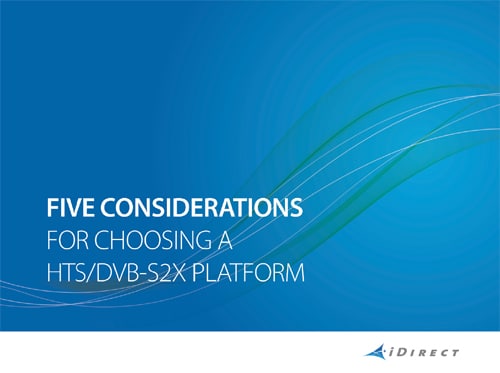
This is part four of a five-part series about harnessing HTS and DVB-S2X to its fullest potential and being ready for the future of our industry. Read Part I – Enabling Higher Capacity Efficiencies, Part II – Implementing Intelligent Terminals and Part III – Scaling Cost-Effectively.
Harnessing the full potential of HTS and DVB-S2X means reimagining what a traditional network looks like. Today, satellite connectivity is undergoing a technology and business transformation, overcoming barriers of interoperability to become part of mainstream converged services and dramatically expand its role in the global communications landscape. And because HTS is transforming the economics of satellite service, operators can strongly position satellite as a viable part of the end-to-end network.

The key to full mainstream adoption is for satellite networks to be defined by modern telco standards such as 4G/5G and Evolved Packet Core (EPC). A satellite platform should also support Layer 2 over Satellite (L2oS) capabilities. This offers the option to run a network in a Layer 2 bridging mode with high efficiency as an alternative to the traditional Layer 3 mode architecture. This allows a variety of modern, converged network architectures to be implemented, with easy integration with terrestrial networks and the ability to pass any Layer 3 protocol desired.
A platform that can take advantage of virtualized components and share virtual environments with cellular and telco functions such as Network Function Virtualization (NFV) and Software Defined Networking (SDN) should also be a strong factor to move towards converged networks and enabling the unification of different networks through virtualized functions that allow for devices to roam across any access network.
The superior network management offered by iDirect includes a comprehensive Network Management System (NMS) that can manage large-scale deployments, monitor network activity, drive profitability and integrate with third-party and operational support systems through open APIs.
For true integration, a satellite platform’s management system must sync with a carrier’s existing Operational Support Systems (OSS) and Business Support Systems (BSS). Through full OSS/BSS integration, with the help of APIs, it’s easier to scale operations. The ultimate goal is a fully automated, programmable and orchestrated network that delivers service on demand to meet any requirement rapidly and cost-effectively.
Read the new white paper – Five Considerations for Choosing a HTS/DVB-S2X Platform – to explore all five considerations now.
